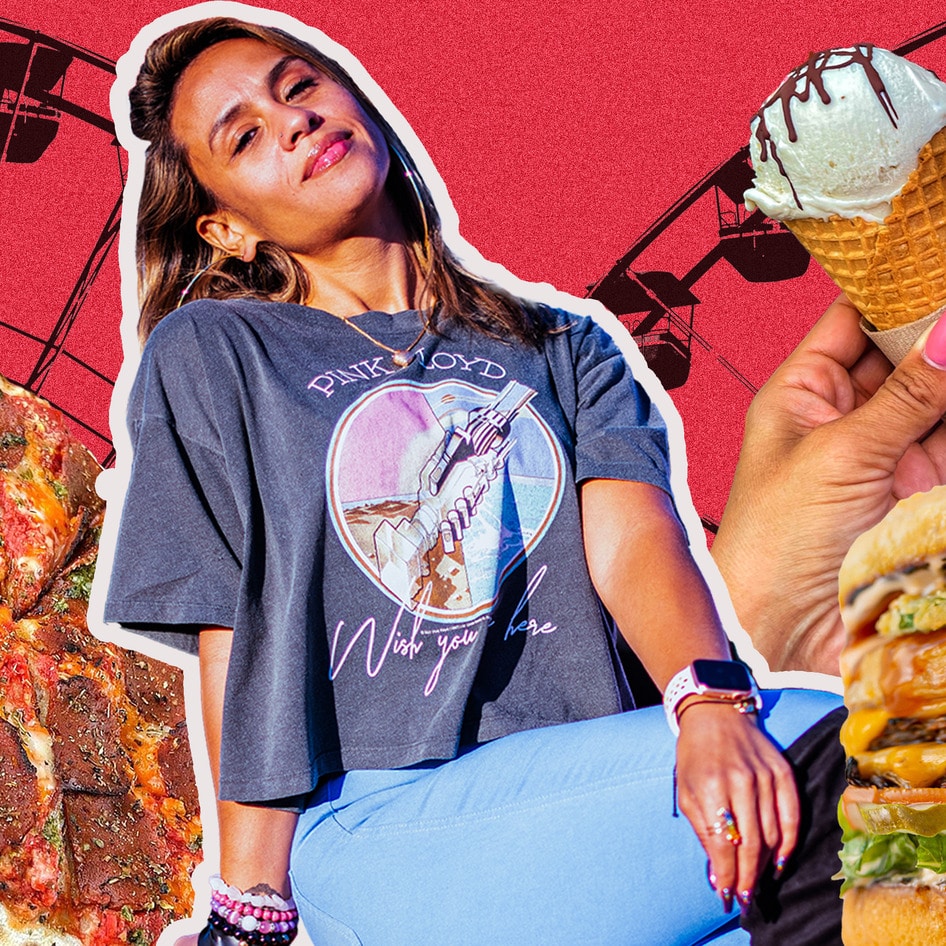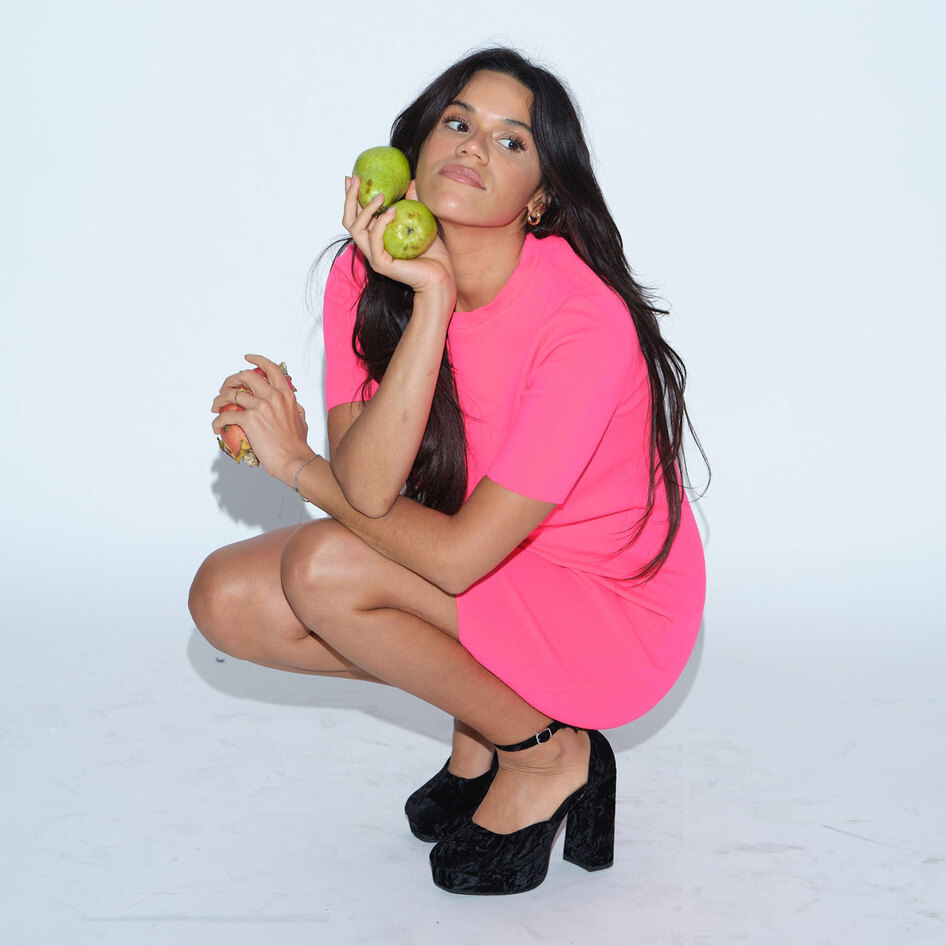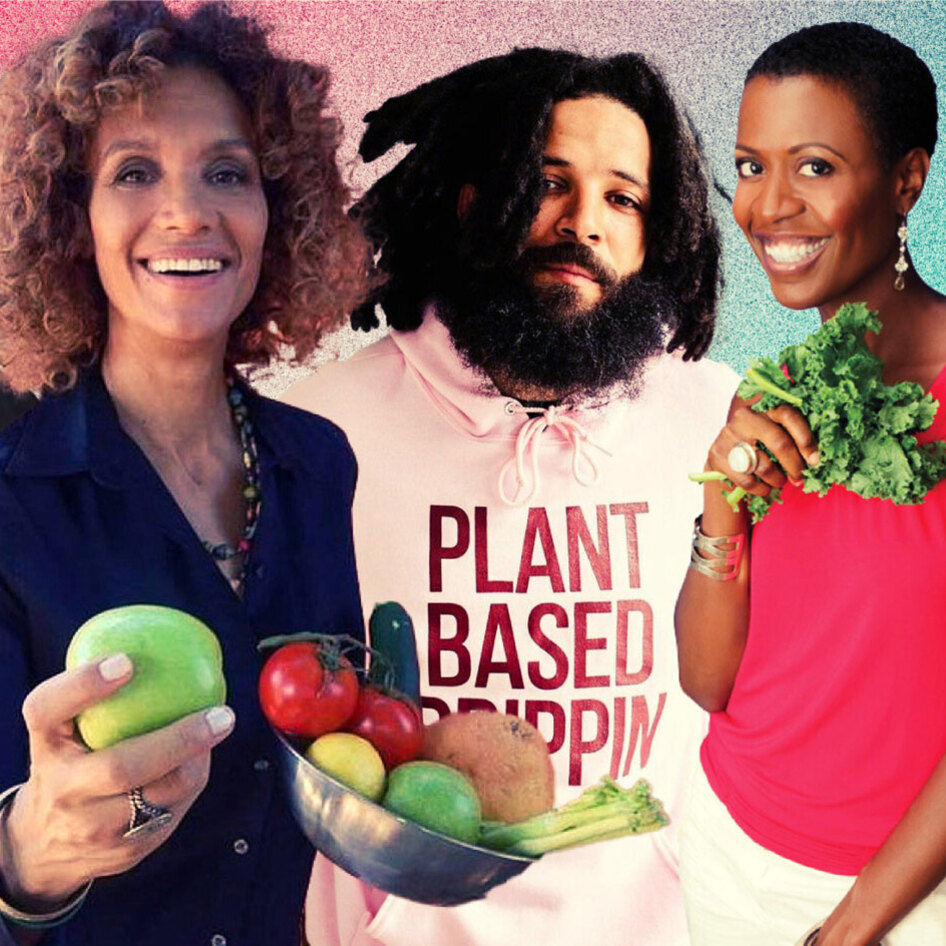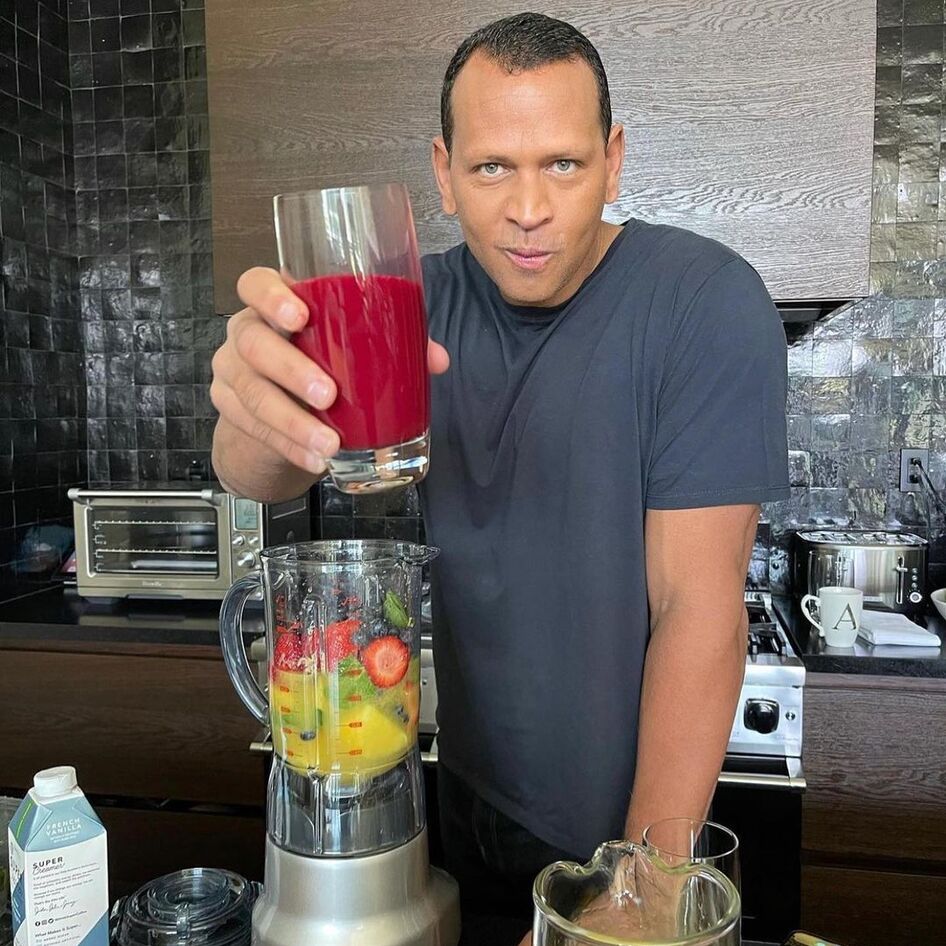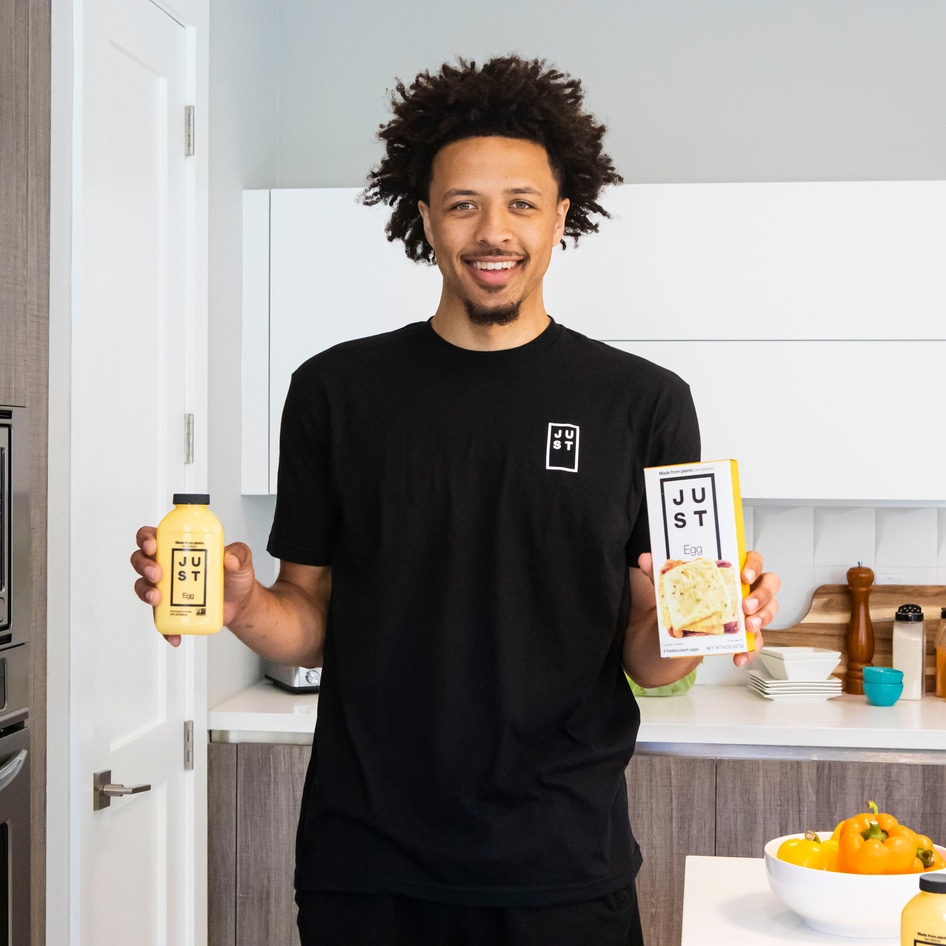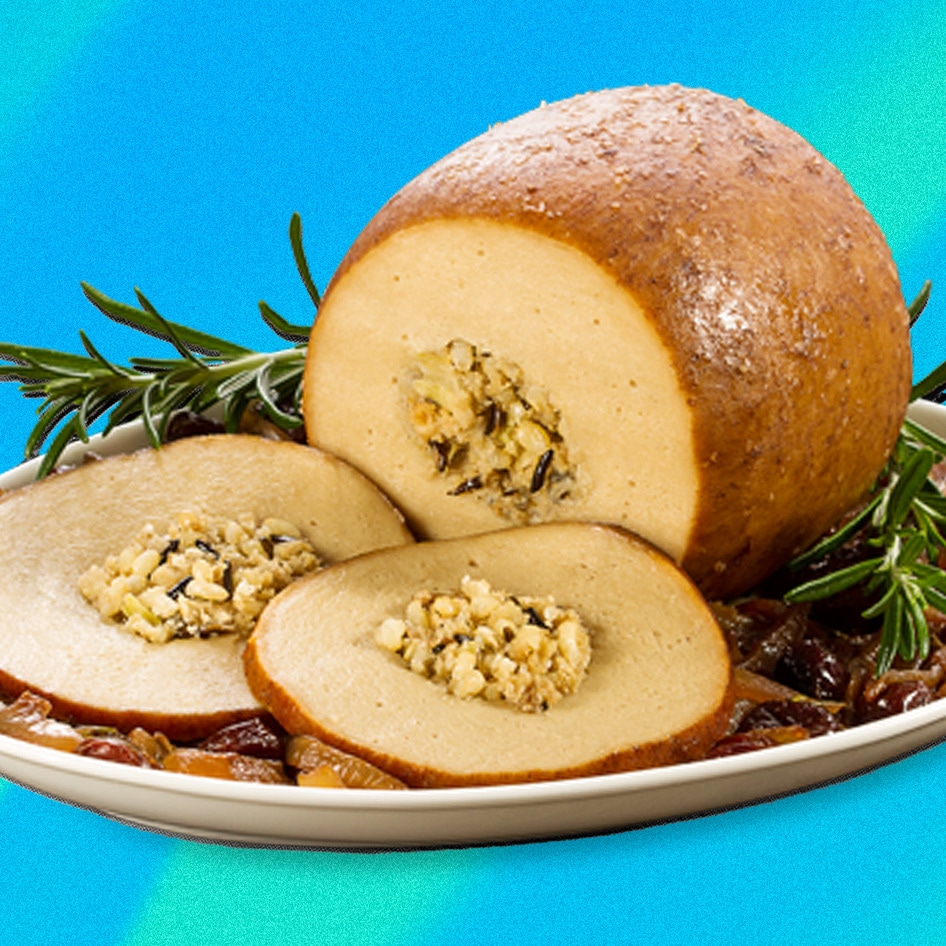10 Questions with Victoria Moran
The best-selling author of Main Street Vegan dishes on writing, Albert the life-saving cat, and filmmaker Michael Moore.
August 20, 2012
In the September+October issue of VegNews, Publisher Joseph Connelly sat down with Victoria Moran to discuss her Main Street Vegan movement. Here, we offer the original, full-length version of the abbreviated interview that ran in the magazine.
1: Congratulations on the publication of Main Street Vegan. The book is amazing. Can you describe the book, and explain the reasons why you wrote now?
Main Street Vegan is to reach out to people who might be intrigued by going veg, but it seems just too hard or too weird. Since I’ve been vegan since it really was hard and weird, I think I can help. As for why I wrote it, I went to a little People for the Ethical Treatment of Animals fundraiser here in NYC in December 2010. I saw video footage like I’ve been seeing for years, but for some reason, that night, I just had this overwhelming desire to help and felt frustrated that I couldn’t do more. That night, going home in the subway, it seriously came to me: Main Street Vegan, short chapters, recipe after each one as a kind of gift to the reader.
2. You have been vegan for nearly 30 years, and even wrote a previous book about the subject.
Yeah, I was vegetarian before that—well, mostly; I had a couple of back-to-fish lapses—and I actually researched veganism in the UK for my undergraduate thesis, which became, as far as I know, the first full-length book on vegan philosophy and practice, Compassion the Ultimate Ethic. But going vegan for good was a tough transition. There were no vegans around me; eating out and traveling seemed impossible; and I was a practicing compulsive overeater: nobody reads the labels on the junk food during a binge. But in late 1983, two things happened. First, I got help for the binge-eating, and then my baby daughter was getting ready for solid foods. I wanted her to have the best life ever, and I knew that the best life meant being vegan.
3. Speaking of your daughter, she had a little role in Main Street.
Yes, my lovely daughter helped with the book—the cover says “by Victoria Moran, with Adair Moran”— and that makes me so proud. She offered some great input from the point of view of someone young and someone who’s been vegan forever. I think that those of us who ‘see the light’ and change the way we live always have a different way of relating to it than people do who were just born into it. There’s an easygoingness I see in lifelong vegans, and Adair has that. She’s an actor and stuntperson, and getting quite a bit of attention for her short plays: they’re funny and kind of dark—it’s a whole other side to this sweet young woman who got a wildlife rehabilitator license so she could save injured birds!
4. In the book, you write, “Being a vegan is about conviction, not perfection.” Elaborate.
Jay Dinshah, co-founder of the American Vegan Society, told me way back in my early 20s: “There is no perfect vegan.” That’s because we live in a world that’s depended on animal exploitation for so long that remnants of it are everywhere, no matter how careful you try to be. It’s about making the kindest choices you can, a day at a time, and not sweating the small stuff so much that we turn off potential vegans. I think it’s similar with the healthy-eating side of things. I love it when my day is full of green juice and smoothies and giant salads with sprouted quinoa, but sometimes it might be an Earl Grey misto from Starbucks and lentil soup from the deli and Chinese takeout. I have to remind myself that as a vegan, and almost exclusively a “whole-foods vegan,” on my worst day, I’m eating somebody else’s idea of health food.
5. Wonderful answer. Jay was, and remains, such an inspiration to many of us. Speaking of health food, each chapter of Main Street ends with a recipe. What are a few of your favorites?
Originally, the book wasn’t going to have any recipes. It just came to me that it would be nice to have a recipe at the end of each chapter. Now, I’m not a recipe creator (or a very creative cook, for that matter), although I came up with a few of the recipes and Adair did, too. The rest were donated by real foodies: people who can look in a crisper and see a buffet. Of the 45 or so recipes in the book, I really like Cheapish Chili because I make that for William, my husband, all winter and he always says, “This is the best chili you’ve ever made.” And I love the Chocolate Mousse from Jennifer Cornbleet’s Raw Food Made Easy for One or Two People. It’s incredibly easy, and healthy, and elegant, and when I make it, people think I can cook (even though it’s raw). And for liquid libation, there’s Kris Carr’s Make Love Not War Green Juice, and Adair’s two Chocolate Martinis—something for everybody.
6. Famously anti-vegan filmmaker Michael Moore endorsed the book. How’d that come to be?
Michael isn’t anti-vegan anymore. He’s been off red meat for a couple of years, he’s read Main Street Vegan, Eating Animals, and Meat Is for Pussies— I gave him that one, so don’t hold its title against him! He’s also getting interested in being healthier and is doing this cool “Mike Takes a Walk” project where he walks every night and invites his Twitter and Facebook people to walk with him wherever they are.
Anyway, the endorsement happened because we were talking one evening—I like his movies; he likes my books; and we’d met a few times—and I mentioned that I’d wanted my current project to be called Main Street Vegan, but the publisher had nixed ‘Main Street.’ Michael thought it was a great title because most people expect Hippie Street Vegan or Whole Foods Street Vegan. He had so many reasons for why “Main Street” worked I asked if he’d talk with my editor. He did, and honestly, if he weren’t a filmmaker, this guy could be a litigator: he pleaded the case for this title so flawlessly that my editor—whom I credit with a lot of open-mindedness, too—came around and she was able to convince the powers that be at the publishing house. She also asked if Michael would read the manuscript and, if he liked it, give us an endorsement, which he did. I love it, too. I feel really blessed to have endorsements from vegans I admire so much—Neal Barnard, Rory Freedman, Moby, Russell Simmons—and I’m thrilled to have one from someone who isn’t vegan yet, because I wrote this book, primarily, for people who aren’t vegan yet—those folks on Main Street who want to feel better and live well and help the planet, but for whom the idea of vegan is still pretty foreign.
7. If you can get Michael Moore to go vegan, I’ll retire. Congratulations on getting this far. You mentioned writing Main Street for folks like Moore. Certainly, though, those who are already veg will learn much from the book?
I actually think that vegans will love this book and identify with it a lot. Of course there’s plenty in here to help pre-vegans make the switch, but I also touch on some fine points that haven’t been looked at much. On raising vegan kids, for instance, there’s plenty out there on the nutritional and social aspects, but those are the easy parts. What about how we support these kids? They know about some pretty gruesome cruelties, and they have to engage in really sophisticated cognitive gymnastics like “It’s bad to kill animals, but my teacher eats meat and my grandpa goes hunting and they’re still good people?” I really believe there’s enough of this “advanced placement veganism” in here to make it a great read for people who already have a strong knowledge base.
And then there’s the pleasure I hope vegans and non-vegans get from reading this book. I was a writer even before I was a vegetarian: I was getting paid to write for teen magazines when I was still in middle school. Words mean a lot to me and I don’t write books just to put content out into the world. Of course, the content has to be valuable and helpful and accurate, but I also want to give my readers a delicious, delightful, moving, and life-changing experience. That’s why I slip in so many anecdotes: We remember stories so much more than statistics. These stories have actually inspired another project, a one-woman show called The Making of a Main Street Vegan. I’ll perform it at Vegetarian Summerfest in July, and it’ll have its New York City premier at the Integral Yoga Institute in October. It’s these stories—these life experiences—that made me vegan and keep me vegan. We all have our stories. I think that’s why we like hearing other people’s.
8: Did you learn anything while writing this book?
I always learn from my books. On this one, I picked up some details that were new to me after all these years—for example, that grass-fed cattle produce even more greenhouse gases than feedlot cattle. Not that this makes feedlots okay, just that it’s a handy factoid to have when somebody is bragging about grass-fed beef as the environmental choice. And I learned some particulars about animal agriculture that I hadn’t known before because Bruce Friedrich vetted my animal chapters.
In a more personal and maybe mystical way, I also learned on this project how helpful people can be. Most of my books have been ‘my’ books: my thoughts, my ideas. This one is such a collaboration—not just between my daughter and me, but there’s information and quotations and recipes woven into it from dozens of bright, committed people in our movement. There’s even input from nonhuman animals in the stories I tell about them: Sebastian, the genius-piglet I met at the East Coast Farm Sanctuary, and the huge steer at the Woodstock Farm Animal Sanctuary who recognized grief in a human and tried to make it better. Animals have a lot to teach me: humility, and acceptance, and that the words I’m so crazy about aren’t the only way to communicate.
9. Have you ever been touched by a non-human companion?
Gosh, Joseph, that’s like being asked if I’ve even been touched by a human! Yeah, the animals in my life have meant so much to me. I actually dedicate the book to them: To the animals I’ve known by name and all those who have no names. I adopted Benjamin as a kitten when I was 27. He was so remarkable: people who were feeling down would come over and I’d say, “Let me make some tea; we’ll talk,” and they’d say, “Uh, I really just wanted to hold Benjamin.” But he wasn’t an extraordinary anomaly. We had another cat, Albert, who was meowing and carrying on and acting really distressed; I took him to the vet twice and everything checked out, but he was still obviously rattled. Adair, who was 12 then, said, “Mom, I think Albert is trying to tell us there’s something wrong with Benjamin.”
Now, I have to tell you that going to a vet’s office and saying, “Check out this cat; our other cat thinks he’s sick” calls for really not caring who thinks you’re nuts, but I did it, and the news was bad: Benjamin had a malignant tumor. He hadn’t shown any symptoms, but his buddy, Albert, wanted him to get help. Once we did, Albert went back to normal.
10. Cat Albert. I love it. We’re certainly covered a lot. And final thoughts?
Gosh, the last word … I guess I want to say that I feel so lucky to be living now when our movement has some serious accomplishments to its credit. I really didn’t think I’d live to see veggie burgers in chain restaurants and soymilk in airports and kale become a sex symbol. But here we are. We’re strong enough now that we’re probably going to be seeing a backlash from various quarters. We don’t just threaten Big Ag: we threaten Big Pharma by the radical act of being healthy. And we have counterparts who agree and disagree. We have so much in common, for instance, with the locavores and the organic movement, and yet there are great gaping distances in our philosophies, too. We have to be able to live with that and work with people who aren’t just like us, but who can go a good part of the way with us.
And I think we all need to be teachers. We fascinate people; that’s just a fact. If we can give them little tidbits of what we’re about—just a taste so they want more—they will want more. And of course we can always feed them—that goes a long way! I really believe in the adage “Teach they neighbor.” That’s why the new project I’ll be focusing on after my book tour is Main Street Vegan Academy, five-day intensives in New York City to train vegan lifestyle coaches, people who can help other people who want to go vegan (or “veganward”) to do that—whether one-on-one, or by speaking to groups, getting on the radio, doing podcasts, whatever it takes to show our neighbors on Main Street that this isn’t all that hard or expensive or exotic, and that it’s fun and enlivening and uplifting and more rewarding that anybody could know before they do it. I was blessed, pure and simple, to have learned about veganism back when it was kind of a secret. Now that it’s out in the world, the most exciting thing I can think of is to see how far it can go.
JUMP TO ... Latest News | Recipes | Guides | Health | Shop
Photo: Tarcher/Penguin

